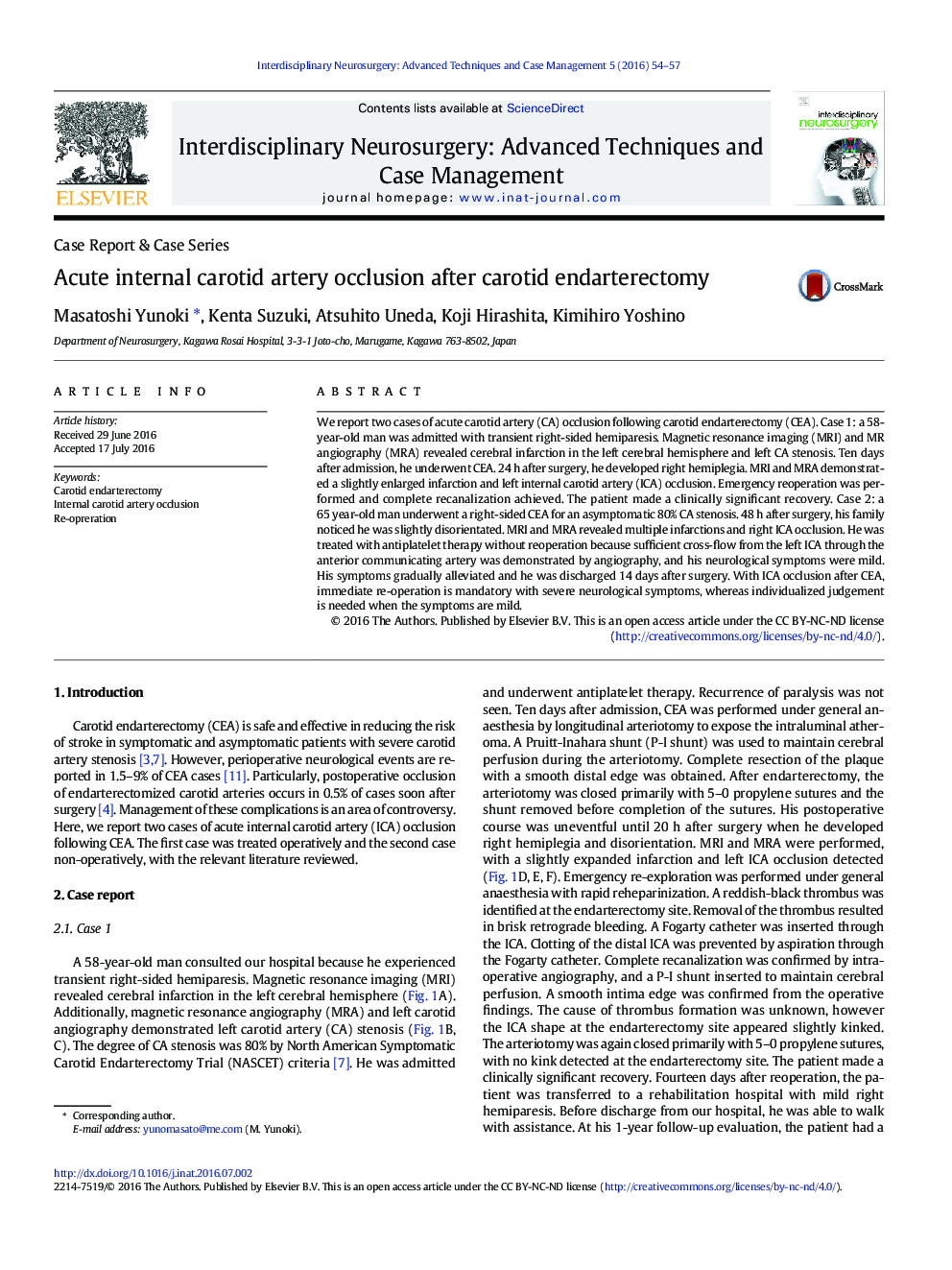| Article ID | Journal | Published Year | Pages | File Type |
|---|---|---|---|---|
| 3057717 | Interdisciplinary Neurosurgery | 2016 | 4 Pages |
•Two cases of acute internal carotid artery (ICA) occlusion following carotid endarterectomy (CEA) are reported.•Complete surgical excision of the carotid plaque during CEA is essential to prevent postoperative thrombus generation.•Surgeons of CEA should be fully aware that ICA occlusion may occur within several days.•For ICA occlusion after CEA, immediate re-operation is mandatory when the symptoms are severe, whereas individualized judgement is needed when the symptoms are mild.
We report two cases of acute carotid artery (CA) occlusion following carotid endarterectomy (CEA). Case 1: a 58-year-old man was admitted with transient right-sided hemiparesis. Magnetic resonance imaging (MRI) and MR angiography (MRA) revealed cerebral infarction in the left cerebral hemisphere and left CA stenosis. Ten days after admission, he underwent CEA. 24 h after surgery, he developed right hemiplegia. MRI and MRA demonstrated a slightly enlarged infarction and left internal carotid artery (ICA) occlusion. Emergency reoperation was performed and complete recanalization achieved. The patient made a clinically significant recovery. Case 2: a 65 year-old man underwent a right-sided CEA for an asymptomatic 80% CA stenosis. 48 h after surgery, his family noticed he was slightly disorientated. MRI and MRA revealed multiple infarctions and right ICA occlusion. He was treated with antiplatelet therapy without reoperation because sufficient cross-flow from the left ICA through the anterior communicating artery was demonstrated by angiography, and his neurological symptoms were mild. His symptoms gradually alleviated and he was discharged 14 days after surgery. With ICA occlusion after CEA, immediate re-operation is mandatory with severe neurological symptoms, whereas individualized judgement is needed when the symptoms are mild.
